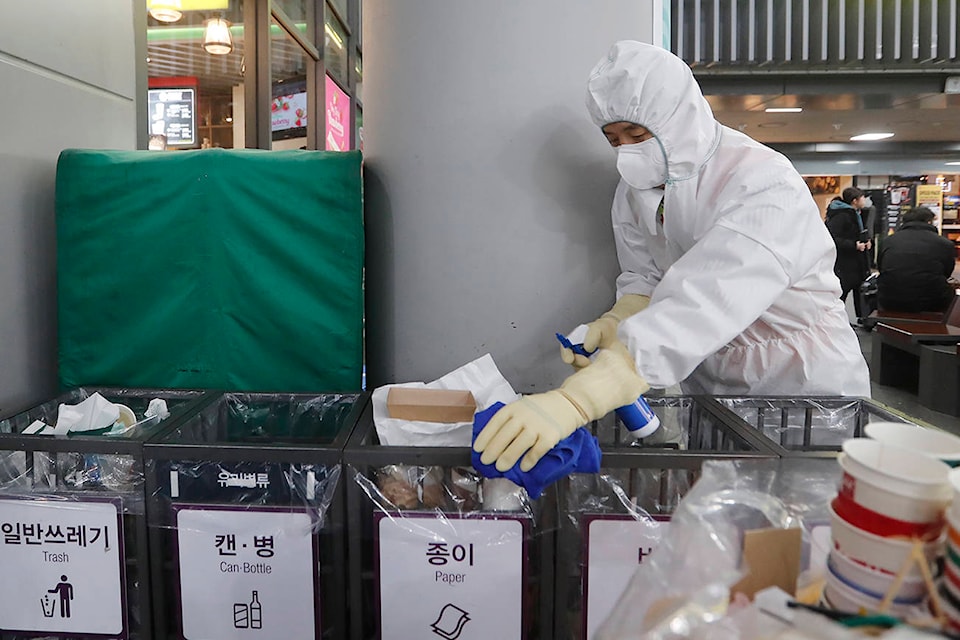The Canadian government is rolling out information rather than surgical masks and thermal scanners to try to keep the country safe from a virus that has already killed more than two dozen people in China and left hundreds more sick.
The World Health Organization on Thursday chose not to declare a global health emergency because of the disease even as China quarantined more territory around the city at the heart of the outbreak, Wuhan, to prevent its spread.
The disease is caused by a coronavirus, part of a family of germs that can cause respiratory illness in humans, and so called because they look like crowns under microscopes. Sometimes the effects are very mild; sometimes, in some people, they can be lethal. The virus that caused severe acute respiratory syndrome (SARS) in 2003 was a coronavirus.
Even as Chinese officials were scrambling to contain this outbreak and five people were being monitored for the coronavirus in Quebec, Canada’s chief medical officer was playing down the chances of an outbreak here.
READ MORE: Saskatchewan lab joins global effort to develop coronavirus vaccine
“While we are aware of incidents under investigation, we have no reports of any confirmed cases of this new coronavirus in Canada,” Dr. Theresa Tam said during a technical briefing with reporters. “The risk of an outbreak in Canada remains low.”
Some countries such as the Philippines have installed thermal scanners in their airports to detect potential carriers of the disease when they arrive from China as those infected have displayed flu-like symptoms such as fevers. Canada has no plans to follow suit, Tam said.
“In our experience during SARS, we scanned millions of people and didn’t pick up a single case,” she said. “What we know is if you get infected, there could be many days between being infected and being symptomatic or having a fever.”
There is no plan to test every single person flying from China or even Wuhan for the same reason, she said, noting it can take up to two weeks for a person who has been infected to start displaying symptoms. It’s not believed people are infectious before they become symptomatic.
The federal government is instead focused on having international travellers flying into Toronto, Montreal and Vancouver who are experiencing flu-like symptoms self-report to border officers, Tam said.
Those arriving from China, especially Wuhan, are also being given information about what to do if they start to feel sick.
“At the border, the most critical opportunity is to educate the travelling public so they know what to do when they actually have symptoms.”
As for prevention, Tam rejected the idea of healthy people wearing surgical masks to keep from getting infected. While she said masks are useful for those who already have a disease, they can make healthy people sick in other ways.
“Just wearing masks when you’re well is not an effective measure, and sometimes it can actually present some risk as you’re putting your fingers up and down your face, removing your mask, putting them next to your eyes, that sort of thing,” she said.
“So there’s no recommendation to wear a mask when you’re going about your regular daily activities.”
Speaking earlier in the day, the head of Quebec’s public health authority said five people in that province were under surveillance for possible exposure.
The five, from the Montreal and Quebec City areas, had travelled to China “and have a history that could be compatible with the fact they could have been exposed,” Dr. Horacio Arruda said.
At least 26 people have died in China and more than 800 people have been infected, with cases popping up in other countries as well.
For comparison, annual outbreaks of seasonal influenza typically sicken three million to five million people and kill 290,000 to 350,000 around the globe, according to the World Health Organization.
“Obviously, we take very seriously this issue of the coronavirus,” Prime Minister Justin Trudeau said Thursday.
“Our health minister is engaged with her partners at the provincial level and we’re working with international partners as well to ensure that we have the best response possible.”
The government is ”of course looking at any extra measures that need to be taken to keep Canadians safe and to prevent the spread of this virus,” Trudeau added.
Anyone suspected of having the disease will be tested for a variety of common ailments such as the flu, Tam said. While provincial authorities can screen for non-coronavirus diseases, full tests will be conducted at the National Microbiology Laboratory in Winnipeg.
One of the difficulties is that the coronavirus’s symptoms are extremely similar to those of the common flu, Tam said, including fever, coughing and difficulty breathing.
“Which is why in the middle of an influenza season and other respiratory viruses, it can look like any of those. And if a traveller from Wuhan has respiratory symptoms or a fever, they will get tested for all the usual suspects in addition to, of course, then being tested for the novel virus.”
Lee Berthiaume, The Canadian Press
